Top Tech Gadgets for Smart Homes: The 2025 Blueprint for Smarter Living
Introduction Smart home technology has matured from novelty into necessity. In 2025, homeowners expect convenience, comfort, security, and sustainability—all
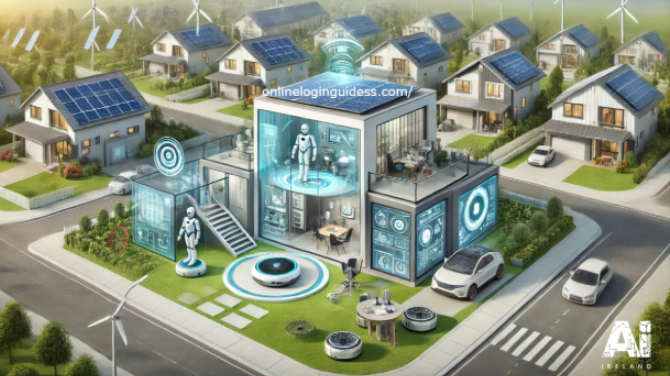
Introduction
Smart home technology has matured from novelty into necessity. In 2025, homeowners expect convenience, comfort, security, and sustainability—all seamlessly integrated into everyday life. The key to achieving this lies in selecting the Top Tech Gadgets for Smart Homes that actually deliver. This guide dives deep into the leading smart devices across eight distinct categories, helping you build a connected ecosystem that adapts to your routines, enhances your safety, and simplifies your surroundings.
Through expert insights, device comparisons, practical setup tips, and the latest trends like Matter and Thread compatibility, you’ll learn how to design a smart space that feels intuitive and personalized. Whether you’re a tech-savvy early adopter or someone seeking meaningful automation without the complexity, this comprehensive blueprint has everything you need: one title, eight carefully curated sections, and a unified vision for modern smart living.
1. Smart Voice Assistants: The True Command Center
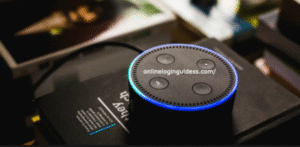
Voice assistants sit at the heart of any smart home—they simplify control, centralize routines, and define your ecosystem.
Amazon Echo (4th Gen)
-
Why it stands out: Voice control via Alexa, impressive audio, and a built-in Zigbee hub that reduces the need for separate bridges.
-
Key features: Multi-room audio, routines, smart home skills, shopping lists, timers, and more.
-
Ideal for: Users seeking expansive device compatibility and ecosystem growth.
Google Nest Audio
-
Why it stands out: Excellent sound quality with seamless Google Assistant integration and direct support for Nest devices and Google services.
-
Key features: Voice commands, room-filling music, real-time info, and routines.
-
Ideal for: Those deeply embedded in Android or Google’s ecosystem.
Apple HomePod mini
-
Why it stands out: Strong privacy stance, full HomeKit compatibility, and support for the Thread protocol.
-
Key features: Siri voice control, secure local processing, HomeKit automation execution even when offline.
-
Ideal for: Apple users prioritizing privacy and seamless device interoperability.
Advice: Choose the assistant that aligns with your device ecosystem. Combining two can cause confusion—keep it simple and start small, expanding as needed.
2. Smart Lighting: Ambience, Energy Savings & Style

Lighting transforms a home’s atmosphere—smart bulbs and switches enhance comfort, security, and efficiency.
Philips Hue White & Color Ambiance
-
Why it stands out: Offers 16 million vibrant colors, syncs with movies and music, and supports intricate routines. Hub-based for robust control and reliability.
Lutron Caseta Wireless Dimmer
-
Why it stands out: Works with both dimmable and non-dimmable LED/Incandescent bulbs, uses radio frequencies (no hub required), and supports three-way setups.
-
Consideration: Requires Lutron bridge for voice assistant control.
Nanoleaf Shapes
-
Why it stands out: Interactive LED light panels that respond to touch, sound, or visual effects—pure aesthetic and expressive lighting.
Lighting Strategy:
-
Begin with bedroom and living room bulbs for mood lighting.
-
Use dimmers in dining and entertainment areas to adjust brightness.
-
Integrate sensors or routines: e.g., porch light turns on at sunset, or “movie mode” dims lights and narrows shades.
3. Smart Climate Control: Comfort with Savings
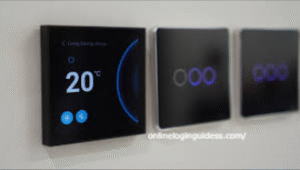
Smart thermostats let your home adjust automatically—cutting energy waste and enhancing comfort.
Ecobee SmartThermostat (Voice Control)
-
Features: Built-in Alexa, remote sensors for cold and hot spots, HVAC alerts, energy reports.
-
Why it matters: Balances comfort across rooms and actively manages energy usage.
Nest Learning Thermostat (5th Gen)
-
Features: Learns your schedule, adjusts heating/cooling accordingly, features manual fallback, and sends monthly energy reports.
-
Why it matters: Stylish, intuitive, and efficient—one of the most polished thermostats on the market.
Honeywell Home T10
-
Features: Zoned HVAC control with room sensors, smart recovery to reach target temps efficiently, customizable alerts.
-
Why it matters: Ideal for larger homes where different areas require different climate settings.
Smart Climate Tips:
-
Start with one thermostat and one or two sensors if your home varies in temperature.
-
Use scheduling: warmer at home, cooler at night/away.
-
Check flood/freeze alerts during cold months to avoid pipe damage.
4. Smart Security & Access: Guarding Your Sanctuary

Securing your home means smart surveillance, smart locks, and connected alerts.
Ring Video Doorbell Pro 2
-
Highlights: 1536×1536 pixel resolution, 3D motion detection, customizable zones, two-way talk.
-
Best for: Front-door monitoring where high visual fidelity and accuracy are essential.
Arlo Pro 5S Floodlight Camera
-
Highlights: 2K HDR with full-color night vision, integrated floodlight and siren, wire-free installation.
-
Best for: Outdoor protection with powerful lighting and smart detection.
August Wi-Fi Smart Lock (4th Gen)
-
Highlights: Retains existing deadbolt, auto-lock/unlock, digital keys, remote access—all without an external hub.
-
Best for: Easy smart upgrade with strong access control.
Yale Assure Lock SL (Z‑Wave & Zigbee Options)
-
Highlights: Sleek keypad, compatible with various smart systems, supports guest PINs, auto-lock ensures doors never stay open.
Pro Security Setup:
-
Use doorbell and floodlight to monitor all entry points.
-
Pair with motion lighting and sensor triggers for a unified system.
-
Lock logs help track entries and enhance digital security.
5. Smart Power & Automation: Anywhere, Any Device

Smart plugs and switches give everyday gadgets newfound intelligence—on demand, on schedule, or via automation.
Wemo Mini Smart Plug
-
Profile: Compact Wi-Fi plug that supports voice, schedules, and remote control. Two can occupy one duplex outlet.
TP-Link Kasa HS200 In-Wall Switch
-
Profile: Replaces wall switches to control lights or ceiling fans via voice or app. Supports multi-way control.
iDevices Outdoor Smart Plug
-
Profile: Weatherproof dual plug with energy tracking; ideal for fountains, holiday lights, or porch lamps.
Smart Power Tips:
-
Group devices (fans, lamps) under smart plugs for centralized control.
-
Monitor device energy use to eliminate phantom draws.
-
Automate seasonal or time-based actions: e.g., holiday lights turn on at dusk, off at 11pm.
6. Smart Sensors: Anticipation & Automation
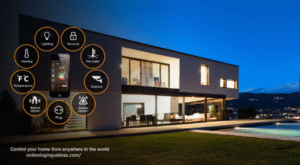
Smart sensors enable proactive responses—automate based on motion, moisture, or air quality.
SmartThings Multipurpose Sensor
-
Profile: Detects open/close, vibration, temperature. Triggers actions like alarms or lights, or track if windows are left open.
Aqara Water Leak & Freeze Sensor
-
Profile: Alerts for leaks or low temperatures. Pair with smart valves or heaters to prevent water or freeze damage.
Eve Motion Sensor (HomeKit/Thread)
-
Profile: Lightning‑fast local detection, battery‑powered, ideal for triggering HomeKit scenes without latency.
Netatmo Weather & Air Quality Station
-
Profile: Monitors indoor CO₂, humidity, noise, and outdoor weather. Helps with ventilation and climate adjustments.
Sensor Use Cases:
-
Auto on/off lights when you enter/exit rooms.
-
Leak sensors under sinks or near water heaters.
-
Automatically open blinds or run fans when CO₂ or humidity rises.
7. Smart Appliances & Robot Helpers
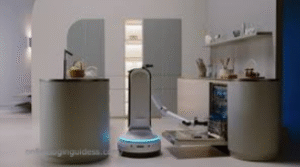
Smart kitchen gadgets and robot cleaners save time, standardize meals, and keep spaces spotless.
iRobot Roomba j7+
-
Standout: Obstacle avoidance technology (e.g., wires, pet waste), self-emptying Clean Base, smart map learning.
Roborock S7 MaxV Ultra
-
Standout: Mops and vacuums autonomously, sonic mop scrubbing, on-board base self-cleaning, advanced sensors avoid cables or objects.
Instant Pot Smart Wi-Fi (6 qt)
-
Standout: Smart pressure cooking with remote control, recipe guidance, multi-function modes, voice and app integration.
Anova Nano Precision Cooker
-
Standout: Compact Bluetooth sous vide cooker, precise temperature control, and excellent for home chefs.
Smart Kitchen Strategy:
-
Start with one smart cooking device (Instant Pot or Anova).
-
Pair with smart plug to monitor appliance usage and schedule cooking times.
-
Robot vacuums can clean while you cook or after meals, maintaining order effortlessly.
8. Outdoor Tech & Smart Home Hubs

Extend intelligence beyond indoors—and unify everything using a smart home brain.
Rachio 3 Smart Sprinkler Controller
-
Benefits: Adjusts watering schedules based on weather data and local forecasts; water-saving and voice-controlled.
Eufy Outdoor Smart Bulb 2C
-
Benefits: Weatherproof smart bulb for porches or patios—app or voice control, supports scheduling and energy tracking.
Samsung SmartThings Hub
-
Features: Central node with Z-Wave, Zigbee, and cloud integration; enables cross-device automation like “if motion, then light.”
Home Assistant (Raspberry Pi)
-
Features: Open-source, local-first platform supporting thousands of integrations; complete privacy and highly customizable rules.
Matter / Thread Compatibility
-
Benefits: The universal smart home standard (backed by Apple, Google, Amazon) ensures plugin-and-play compatibility, secure connections, and better inter-device communication—critical for future-proofing.
Outdoor + Hub Setup:
-
Automate porch lighting with motion sensor triggers.
-
Sync sprinkler watering with weather sensors or forecasts.
-
Use hubs to unify indoor and outdoor gadgets under a single set of routines and voice assistant control.
Conclusion and Setup Blueprint
Smart home technology thrives when approached methodically:
-
Pick your primary ecosystem (Alexa, Google, HomeKit, SmartThings, or Home Assistant).
-
Start with voice assistant + smart lighting—these are visible, easy, and build momentum.
-
Add comfort and security—thermostats, sensors, cameras, and locks come next.
-
Automate kitchen, cleaning, outdoor routines—robot vacuums, appliances, and smart sprinklers add luxury.
-
Use hubs to connect all devices, orchestrate scenes, and maintain privacy.
-
Embrace Matter and Thread—your future devices will thank you.
With this 2025 blueprint, your smart home will be more secure, comfortable, sustainable, and intelligent. Start small, plan thoughtfully, integrate gradually—and enjoy living in a space that responds to you.












